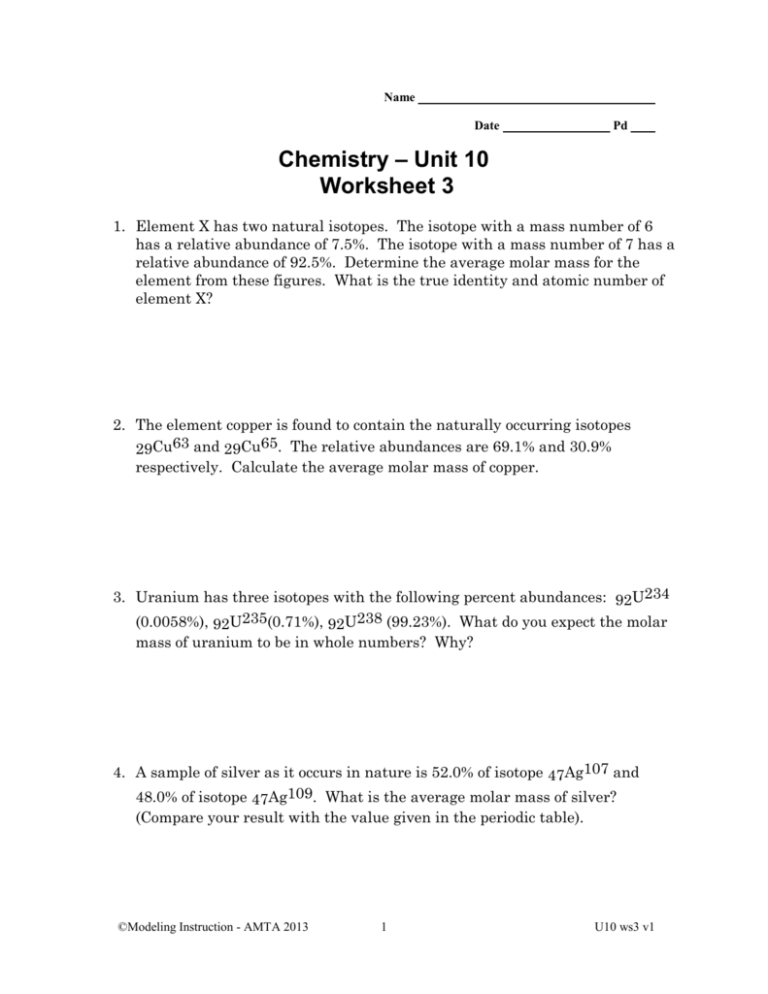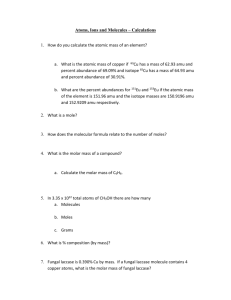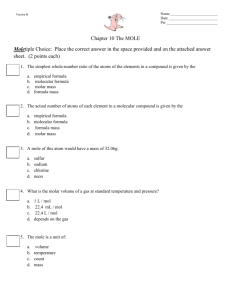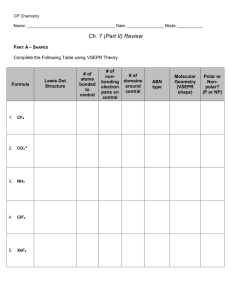Mean molar mass
advertisement

Name Date Pd Chemistry – Unit 10 Worksheet 3 1. Element X has two natural isotopes. The isotope with a mass number of 6 has a relative abundance of 7.5%. The isotope with a mass number of 7 has a relative abundance of 92.5%. Determine the average molar mass for the element from these figures. What is the true identity and atomic number of element X? 2. The element copper is found to contain the naturally occurring isotopes 29Cu63 and 29Cu65. The relative abundances are 69.1% and 30.9% respectively. Calculate the average molar mass of copper. 3. Uranium has three isotopes with the following percent abundances: 92U234 (0.0058%), 92U235(0.71%), 92U238 (99.23%). What do you expect the molar mass of uranium to be in whole numbers? Why? 4. A sample of silver as it occurs in nature is 52.0% of isotope 47Ag107 and 48.0% of isotope 47Ag109. What is the average molar mass of silver? (Compare your result with the value given in the periodic table). ©Modeling Instruction - AMTA 2013 1 U10 ws3 v1 5. Ninety-two percent of the atoms of an element have a mass of 28.0 amu, 5.0% of the atoms have a mass of 29.0 amu, and the remaining atoms have a mass of 30.0 amu. Calculate the average molar mass and identify the element. 6. Use the following isotope data for lead to show that its molar mass is 207 amu, (1.37%) 82Pb204 (26.26%) 82Pb206 82Pb207 82Pb208 (20.82%) (51.55%) 7. Boron exists in the form to two stable isotopes, boron-10 and boron-11. These occur in the abundance of 19.6 percent and 80.4 percent respectively. Calculate the average molar mass of boron. 8. Precise molar masses of each isotope of magnesium are given below along with the percent abundance of each isotope: magnesium -24 23.98504 78.70% magnesium-25 24.98584 10.13% magnesium-26 25.98259 11.17% Calculate the average molar mass of magnesium. ©Modeling Instruction - AMTA 2013 2 U10 ws3 v1








